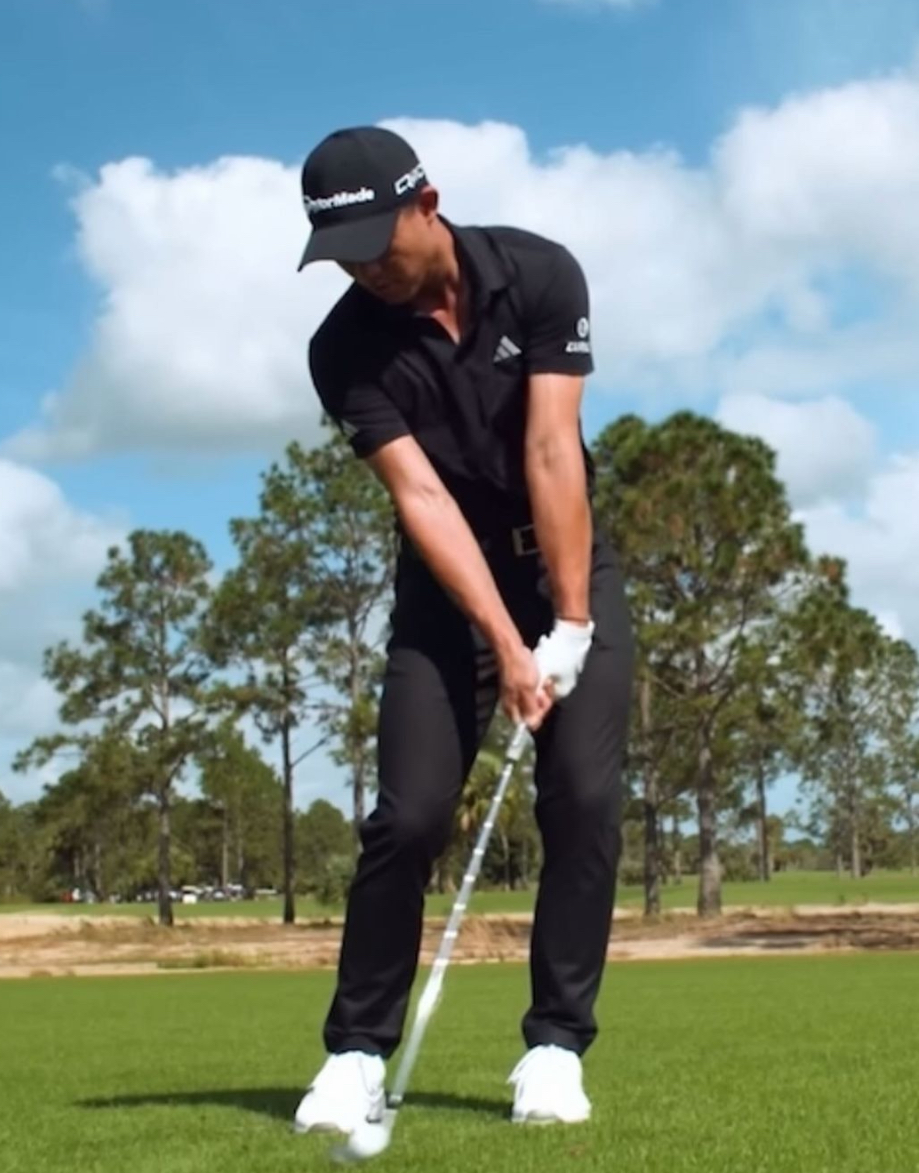
How to Impact Guide for Compression, Distance and Spin
How to Impact Guide - Get Compression, Distance and Spin
Hi. My name is Coach Erik Schjolberg and as a seasoned golf instructor with over 25 years of experience, I have dedicated my career to helping golfers of all levels enhance their performance. At EJS Golf Academy in Scottsdale, Arizona, I work with PGA Tour professionals, advanced juniors, college athletes, and committed amateurs. My approach emphasizes the importance of consistent practice, advocating for at least 15 minutes of focused training daily, supplemented by personalized feedback. A critical aspect of improving one's game lies in mastering the impact position and controlling the low point of the swing. These elements are fundamental to achieving consistent ball striking and overall success on the course.
IMPACT

Understanding the Impact Position
The impact position is the precise moment when the clubface meets the ball, significantly influencing the shot's outcome. A proper impact position ensures optimal energy transfer from the club to the ball, resulting in increased distance and accuracy. Key components of an ideal impact position include forward shaft lean, proper hip and shoulder alignment, and balanced weight distribution. Studies have shown that golfers who maintain a forward shaft lean at impact can increase their ball speed by up to 10%, leading to longer shots. Additionally, proper hip and shoulder alignment contributes to a more efficient swing path, reducing the likelihood of mishits.
The Role of Low Point Control
The low point of the swing arc is the lowest point the clubhead reaches during the swing. Controlling this low point is crucial for consistent ball striking, as it determines whether the club contacts the ball before the ground. Ideally, the low point should occur just after the ball, ensuring a ball-first, then turf contact. This technique promotes cleaner strikes and prevents common errors such as fat or thin shots. Research indicates that professional golfers consistently achieve a low point that is approximately four inches ahead of the ball, contributing to their superior ball-striking abilities.
Achieving Forward Shaft Lean
Forward shaft lean at impact means that the hands are positioned ahead of the clubhead, promoting a descending strike. This position helps compress the ball, resulting in a more penetrating ball flight and increased distance. To achieve forward shaft lean, focus on maintaining a firm left wrist (for right-handed golfers) through impact. Practicing with alignment rods can provide visual feedback, helping golfers understand the correct hand positioning. Consistent practice of this technique can lead to significant improvements in ball striking and overall performance.
Proper Hip and Shoulder Alignment
At impact, the hips and shoulders should be open relative to the target line, facilitating proper rotation and power generation. This alignment allows for a more efficient transfer of energy from the body to the club, enhancing both distance and accuracy. To achieve this position, initiate the downswing with a hip rotation towards the target, allowing the shoulders to follow naturally. Drills that emphasize hip rotation can be beneficial in developing this aspect of the swing. Consistent practice of proper hip and shoulder alignment can lead to more powerful and accurate shots.
Weight Distribution at Impact
Balanced weight distribution is essential for stability and control during the swing. At impact, approximately 80% of your weight should be on the lead foot, ensuring a solid base and preventing sway. This weight shift promotes a downward strike, essential for crisp iron shots. To practice proper weight distribution, focus on initiating the downswing with a shift of weight to the lead foot, followed by a rotation of the hips and shoulders. Consistent practice of this technique can lead to more consistent ball striking and improved performance.
Maintaining Spine Angle
Preserving the spine angle established at address throughout the swing is crucial for consistent ball striking. Maintaining this angle prevents early extension or "standing up" at impact, which can lead to mishits. To maintain spine angle, focus on keeping your chest over the ball throughout the swing, allowing for a more consistent swing path. Drills that emphasize maintaining spine angle can be beneficial in developing this aspect of the swing. Consistent practice of maintaining spine angle can lead to more consistent ball striking and improved performance.
Proper Weight Shift
Transitioning your weight smoothly from the trail foot to the lead foot during the downswing is essential for positioning the low point correctly. This weight shift promotes a downward strike, essential for crisp iron shots. To practice proper weight shift, focus on initiating the downswing with a shift of weight to the lead foot, followed by a rotation of the hips and shoulders. Drills that emphasize weight shift can be beneficial in developing this aspect of the swing. Consistent practice of proper weight shift can lead to more consistent ball striking and improved performance.
Drills to Improve Impact Position and Low Point Control
Incorporating specific drills into your practice routine can significantly enhance your impact position and low point control. One effective drill is the Impact Bag Drill, which involves striking a specially designed bag to simulate the feel of proper impact. This drill helps reinforce the correct hand and body positioning at impact. Another beneficial exercise is the Line Drill, where you draw a line on the ground and practice making divots starting just after the line, promoting a forward low point. Additionally, the Two-Tee Drill involves placing two tees in the ground, one representing the ball position and the other a few inches ahead, and focusing on striking the first tee and then brushing the second, encouraging a proper low point.
Common Mistakes to Avoid
Several common mistakes can hinder your ability to achieve a proper impact position and control the low point. One such error is the early release of the club head, where the wrists unhinge prematurely, leading to a loss of power and inconsistent contact. To avoid this, focus on maintaining wrist hinge until impact. Another common mistake is improper weight shift, where the golfer fails to transfer weight to the lead foot, resulting in fat or thin shots. Practicing drills that emphasize proper weight distribution can help correct this issue.
The Importance of Consistent Practice
Improving your impact position and low point control requires consistent and focused practice. Allocating at least 15 minutes daily to targeted drills can lead to significant improvements over time. Utilizing feedback tools, such as alignment sticks, you can be well on your way to changing your game forever.
Check out more of my blogs to continue to learn more about your golf swing and how you can get better. Specifically, check out my blog here.
Golf improvement is a science, not a mystery. At EJS Golf Academy, I debunk the myth that golfers must "get worse before they get better." Through my data-driven approach and cutting-edge technology, I help players make immediate, tangible improvements. Experience this transformative method at McCormick Ranch Golf Club in Scottsdale or through my online coaching. Visit EJS Golf to discover how I can elevate your game using advanced techniques and personalized instruction. Let's unlock your potential for continuous improvement together.
(480) 861-9370
